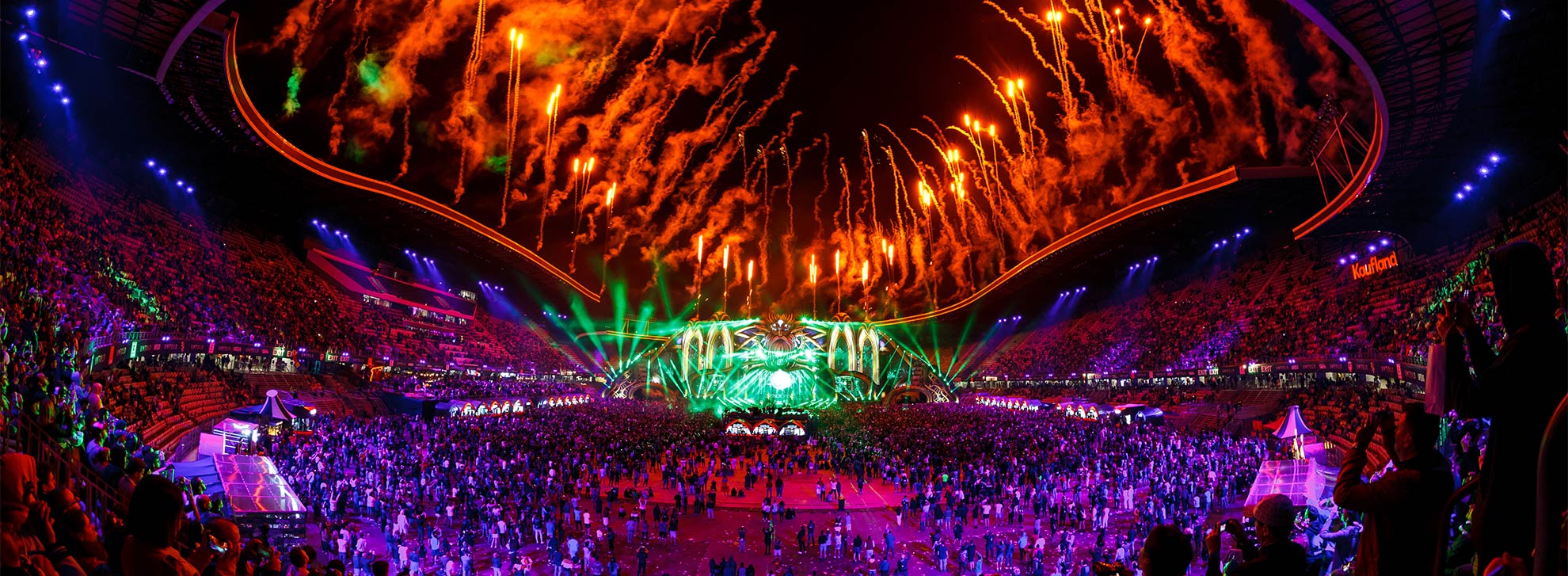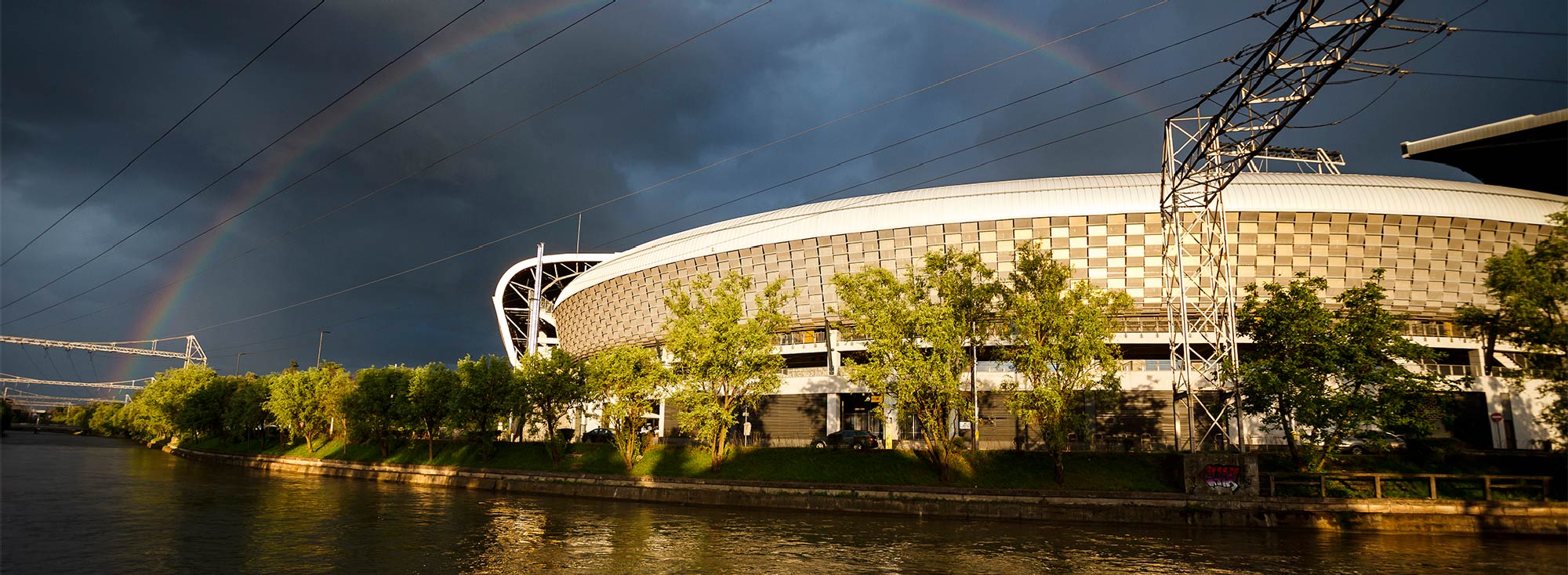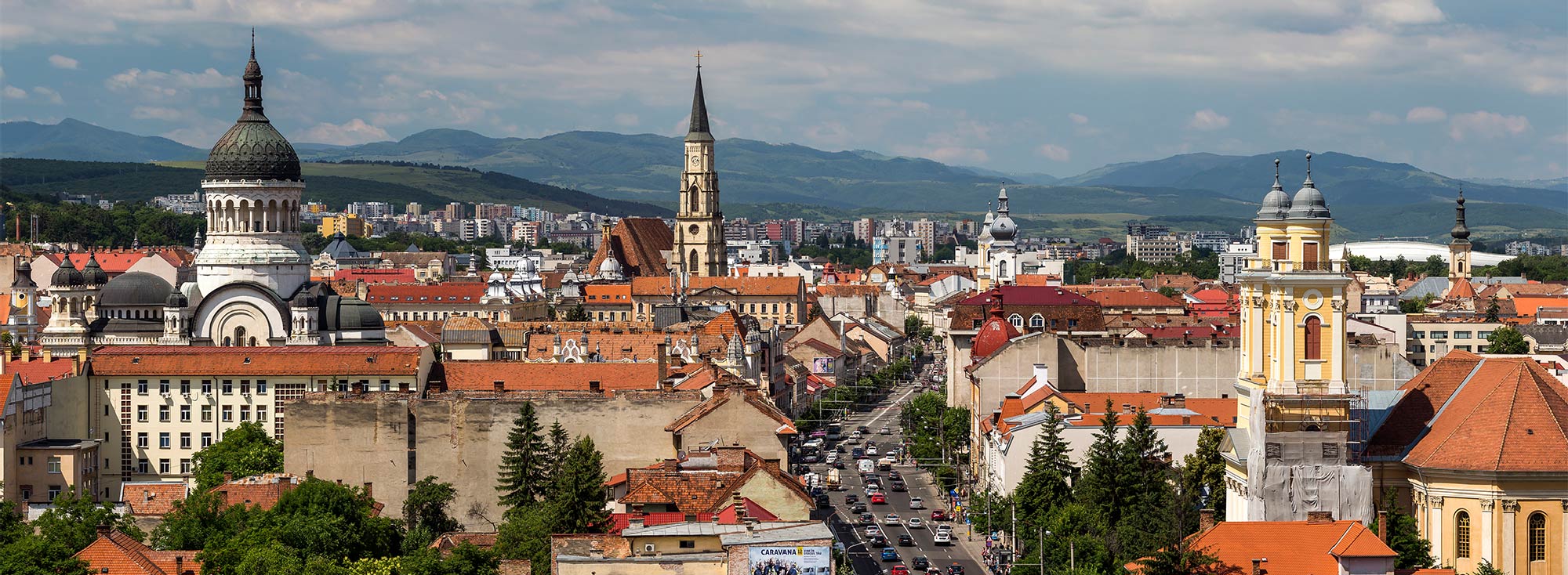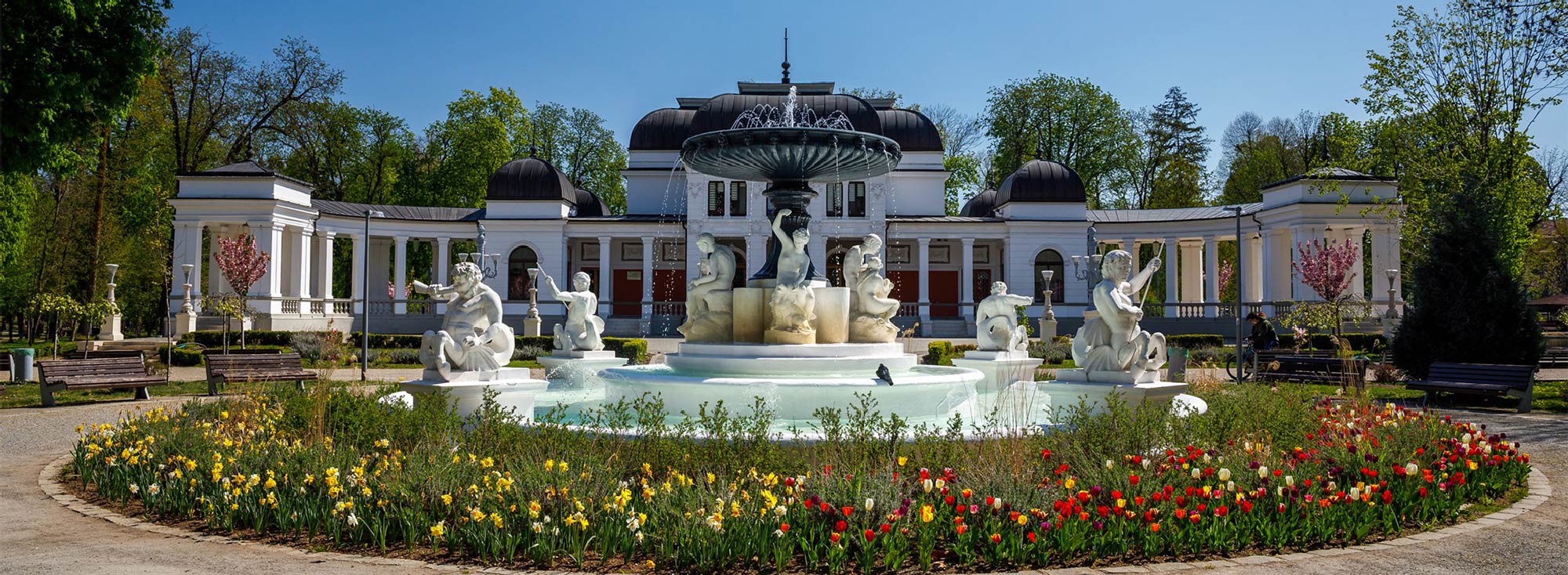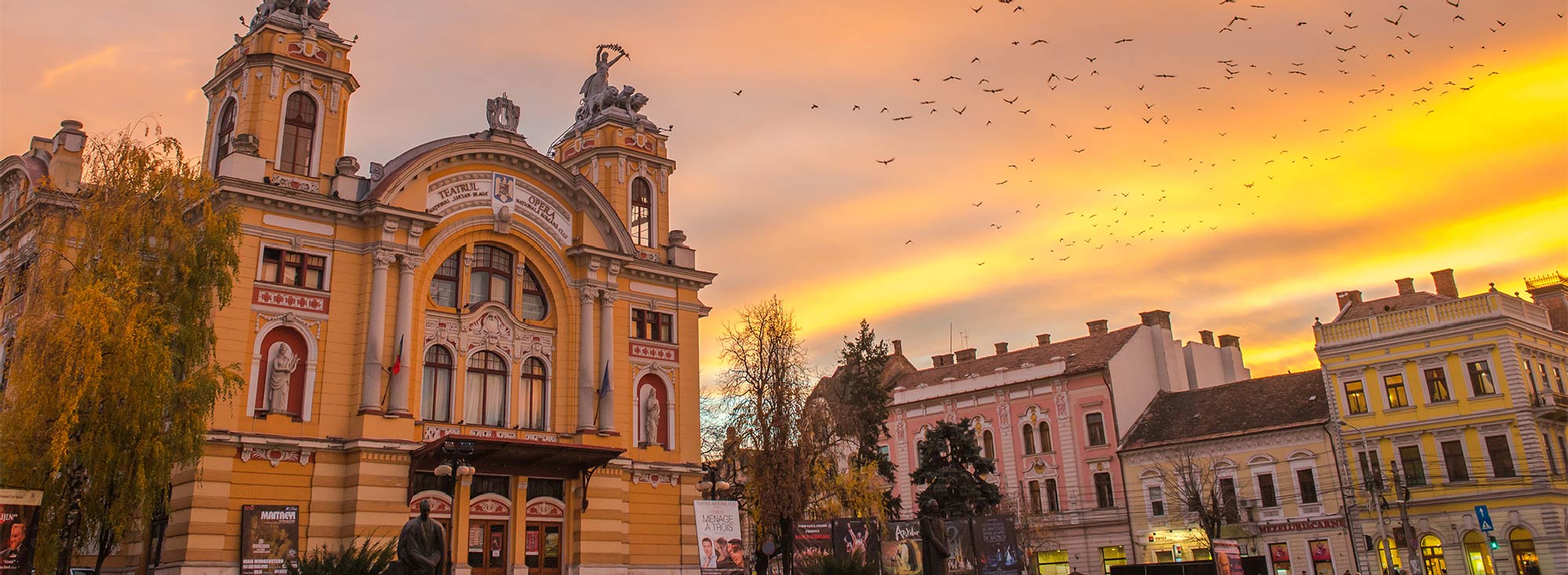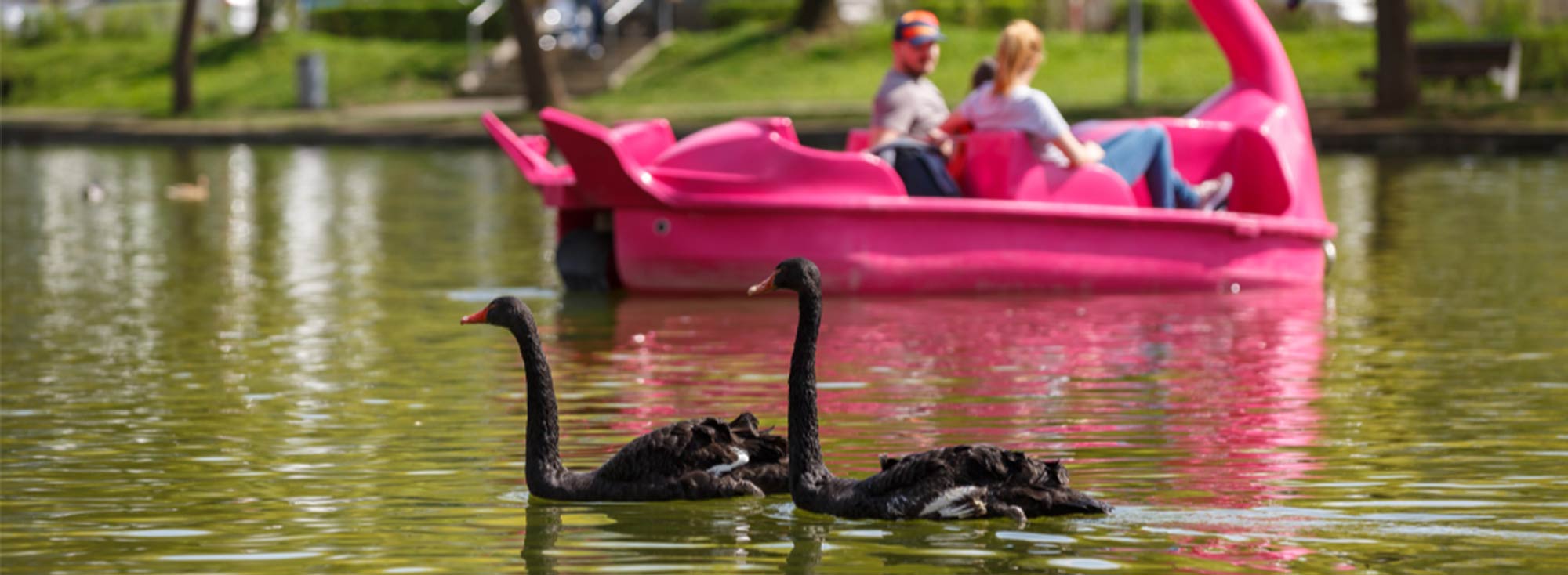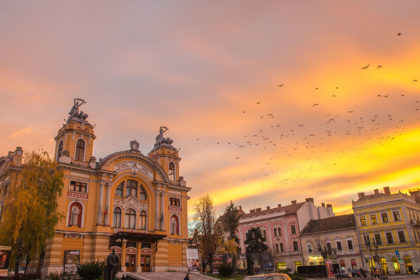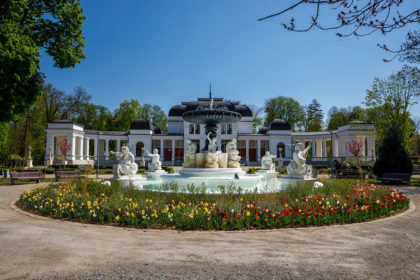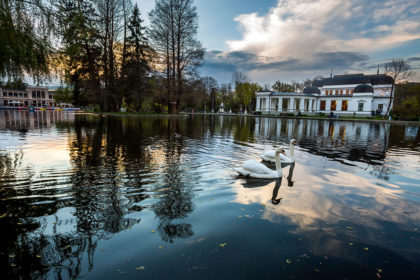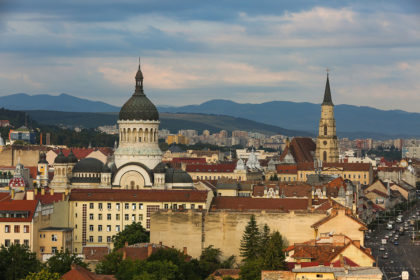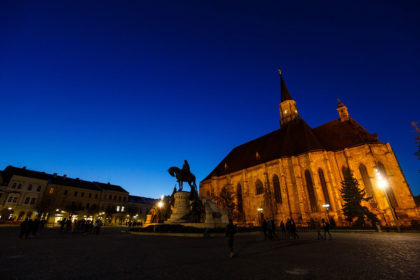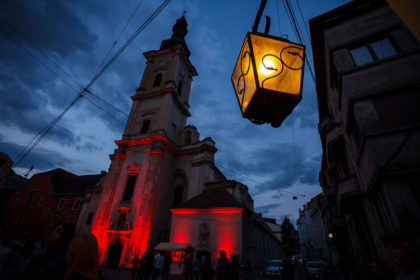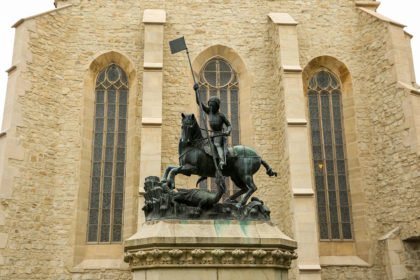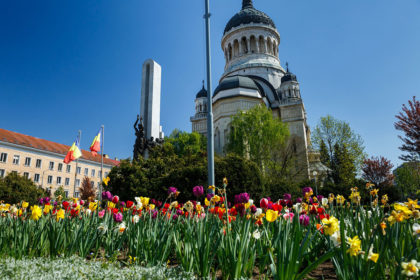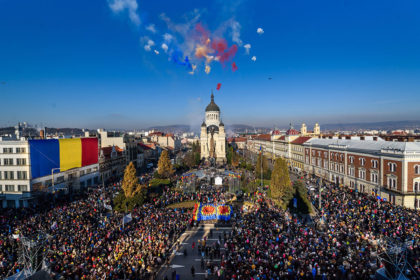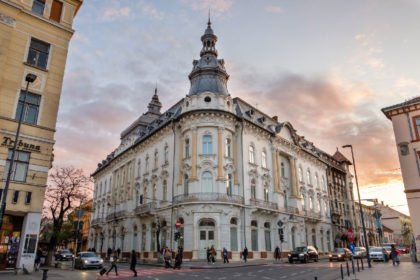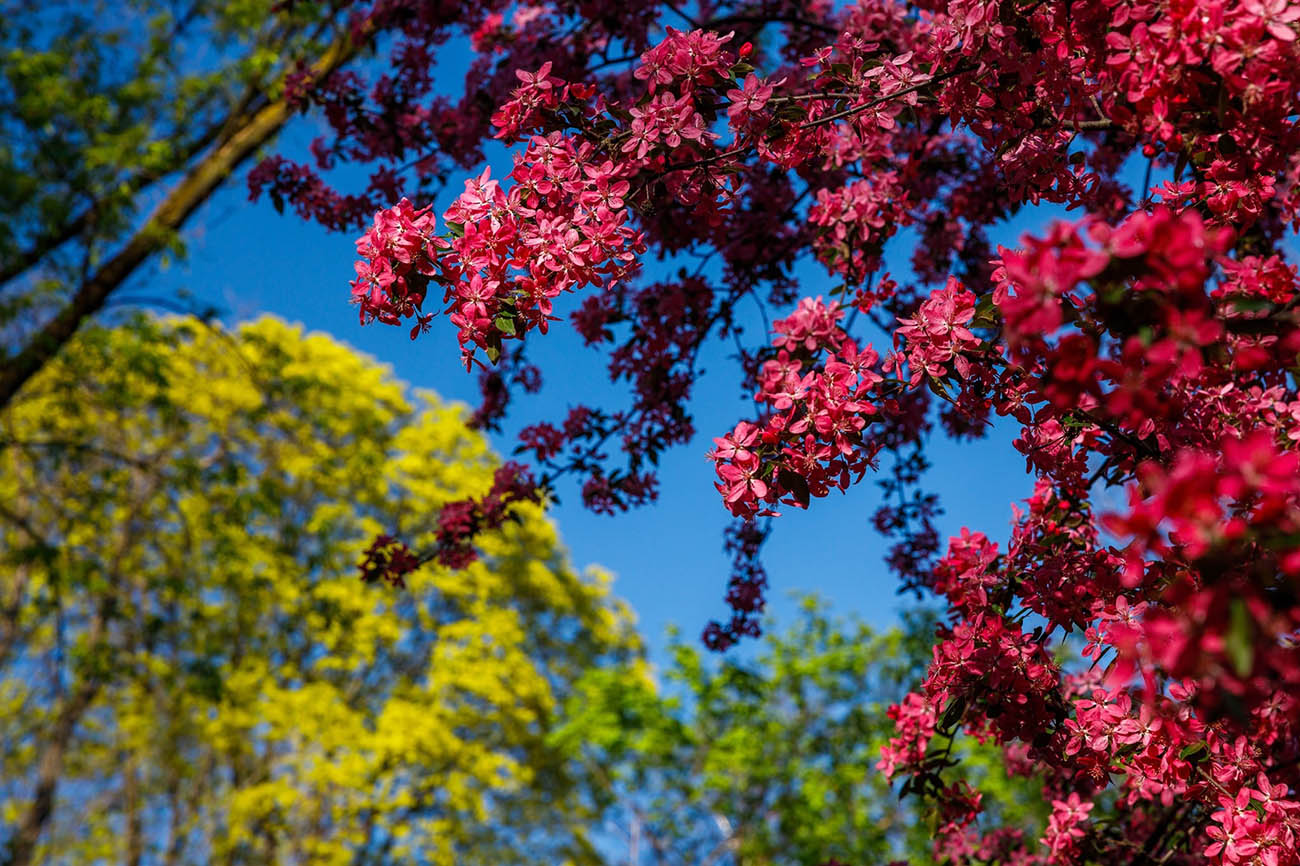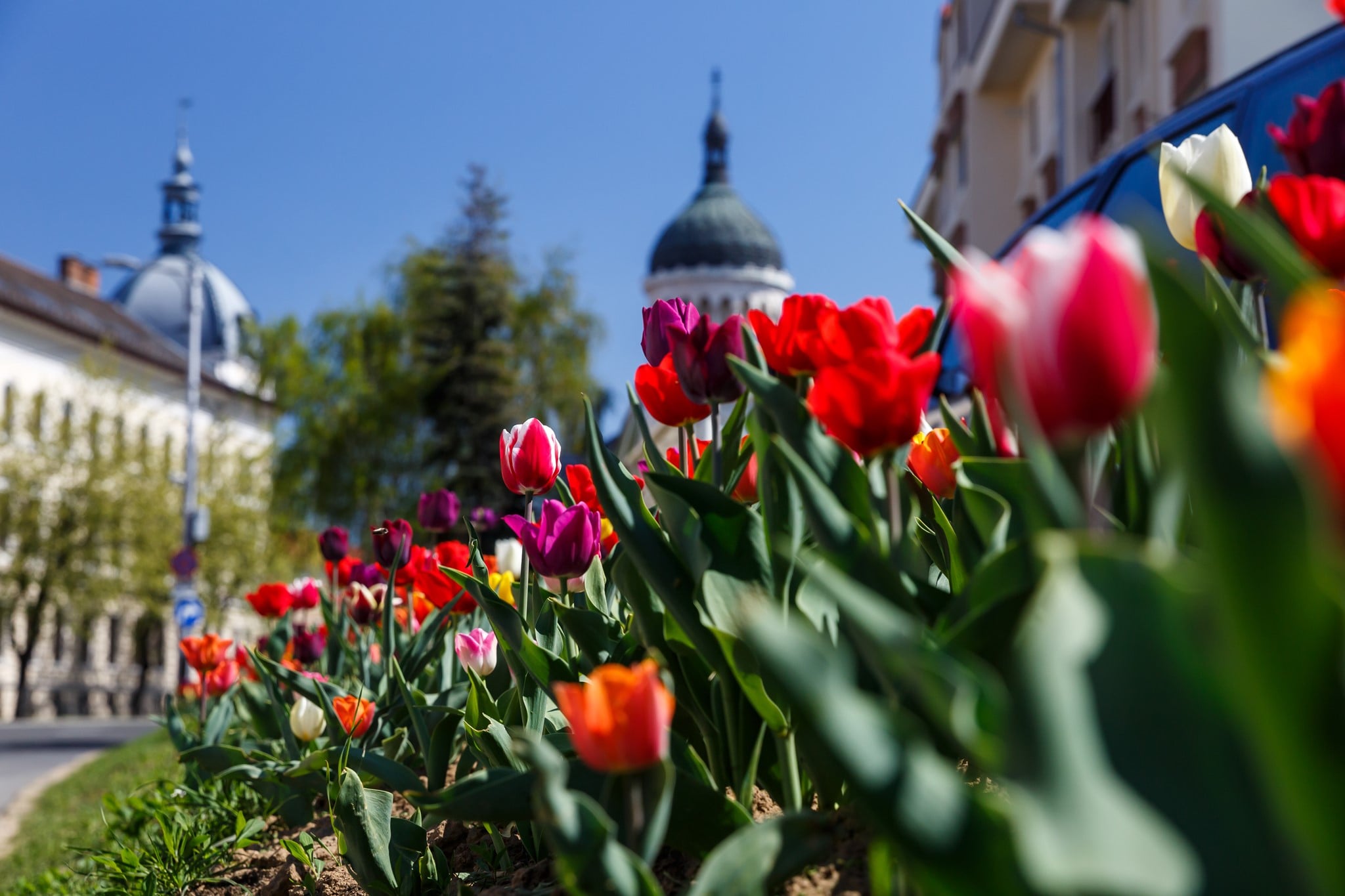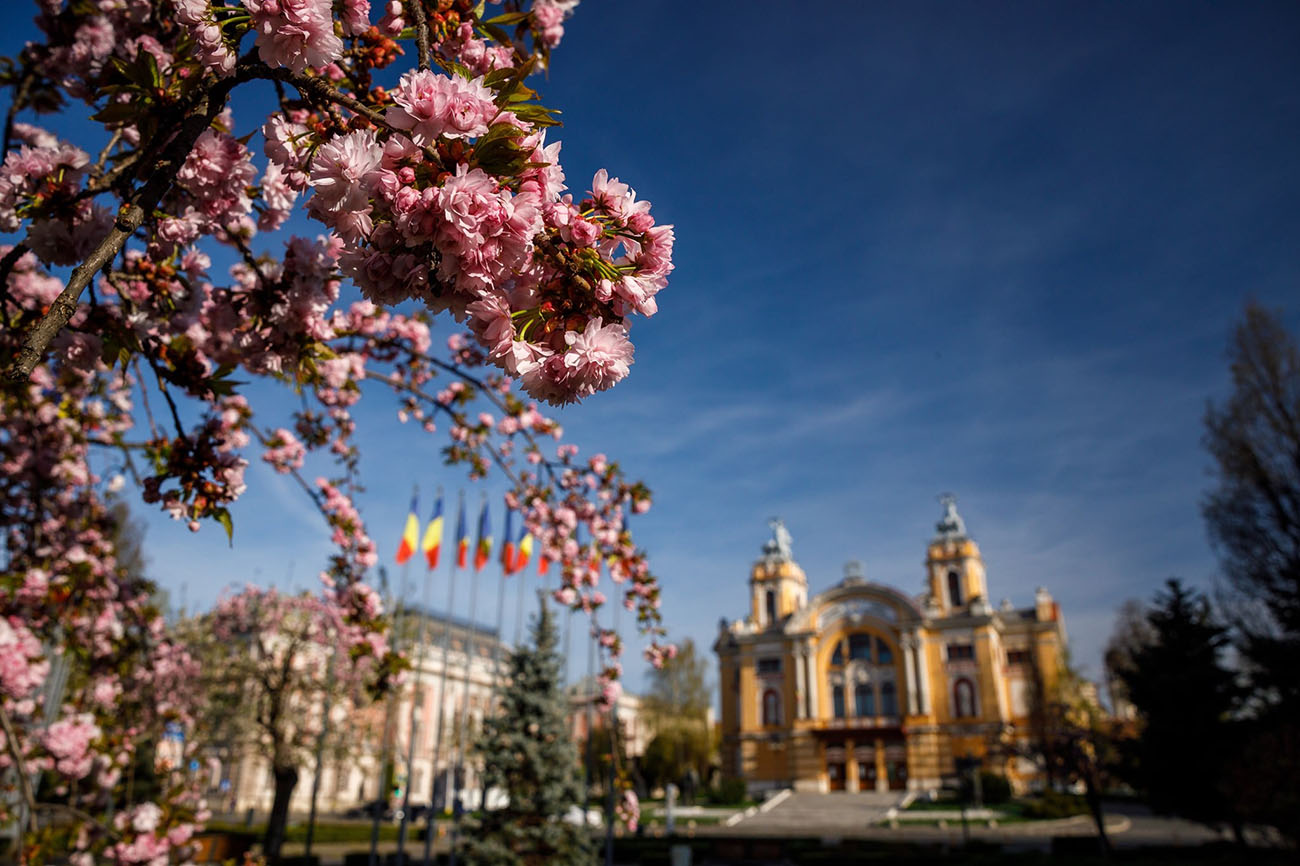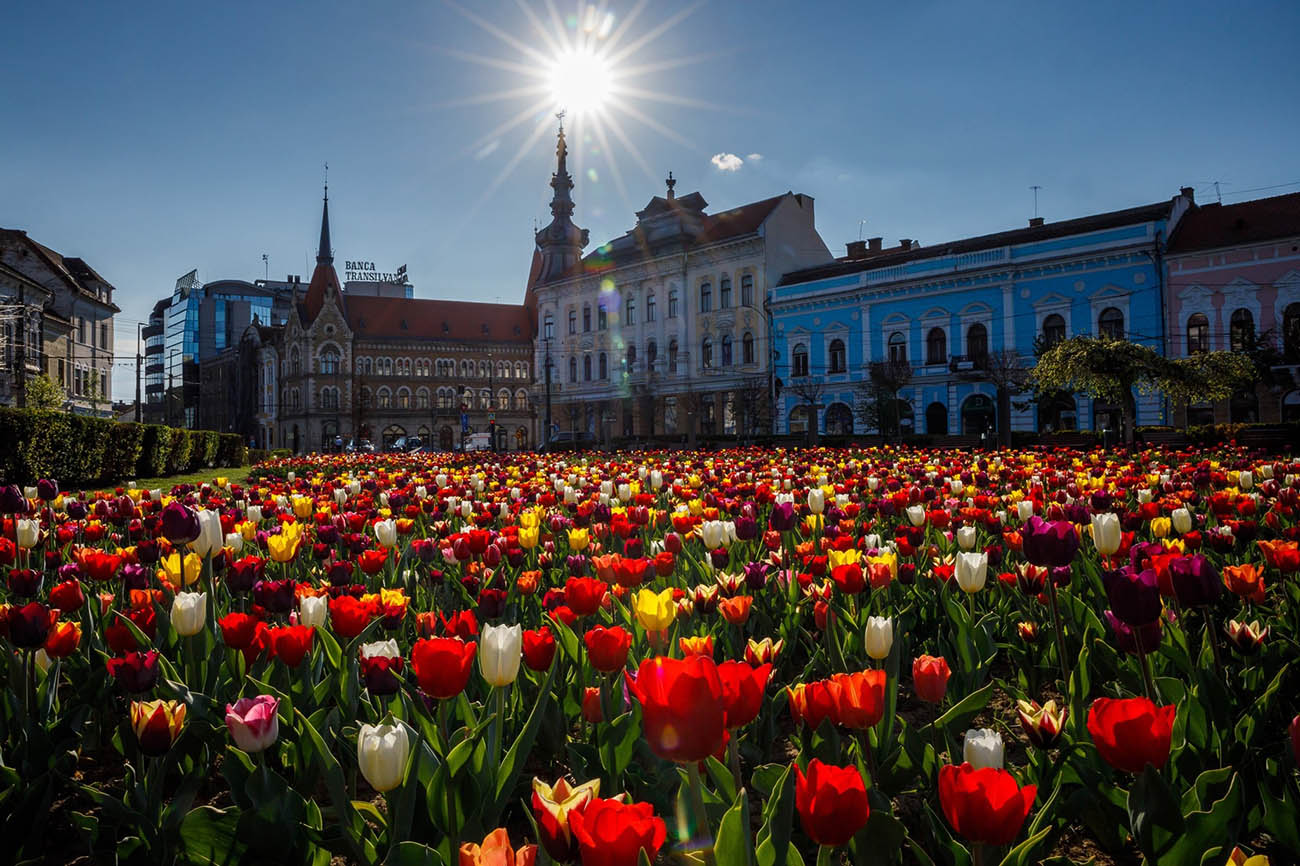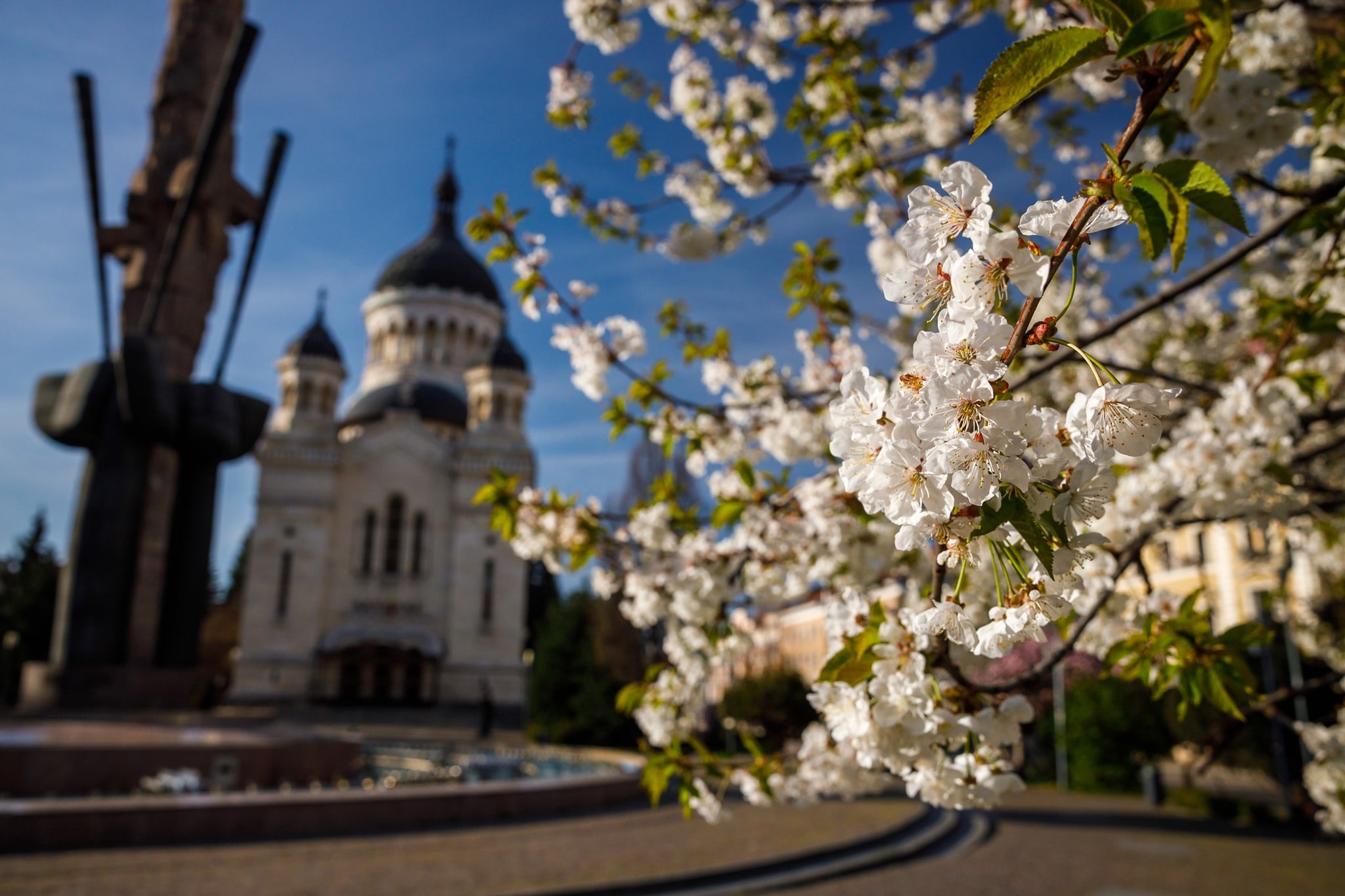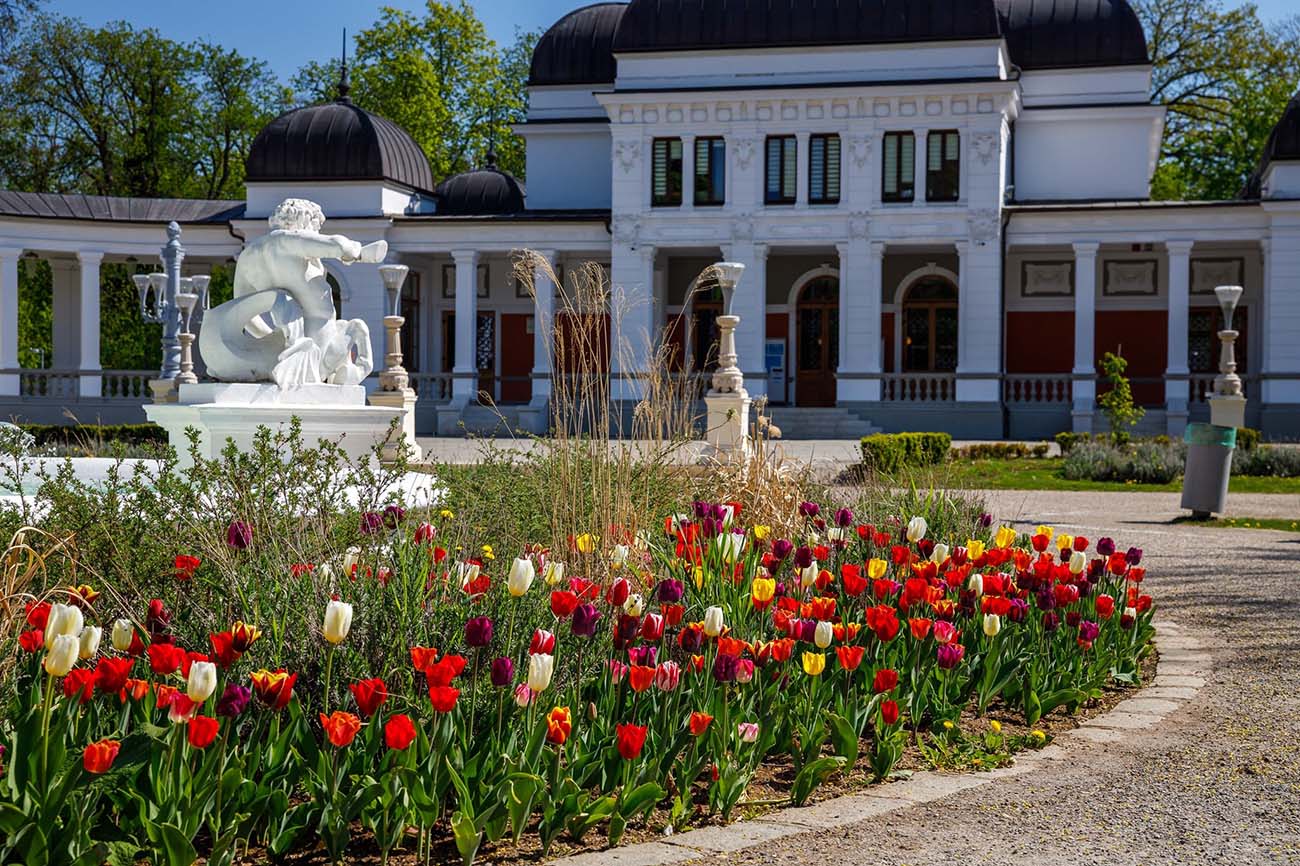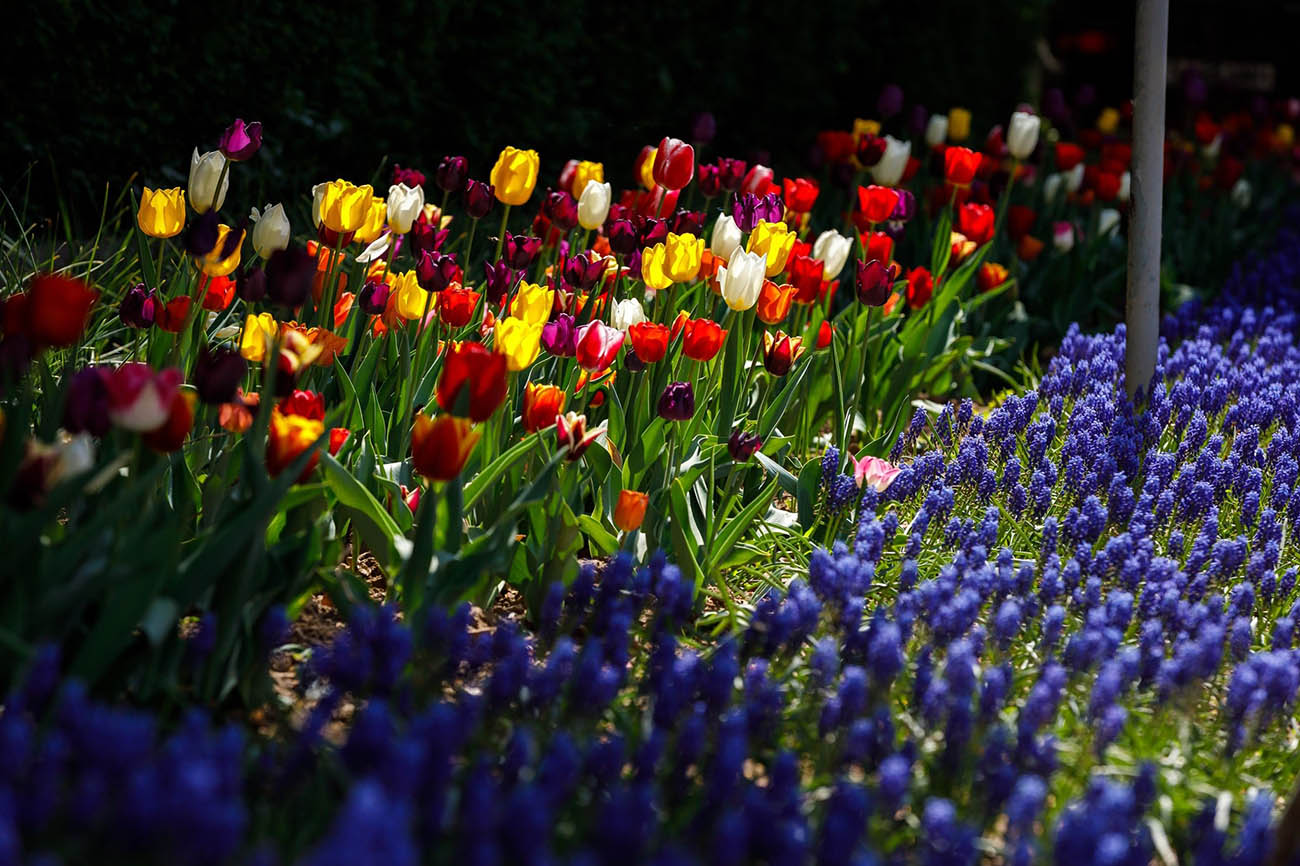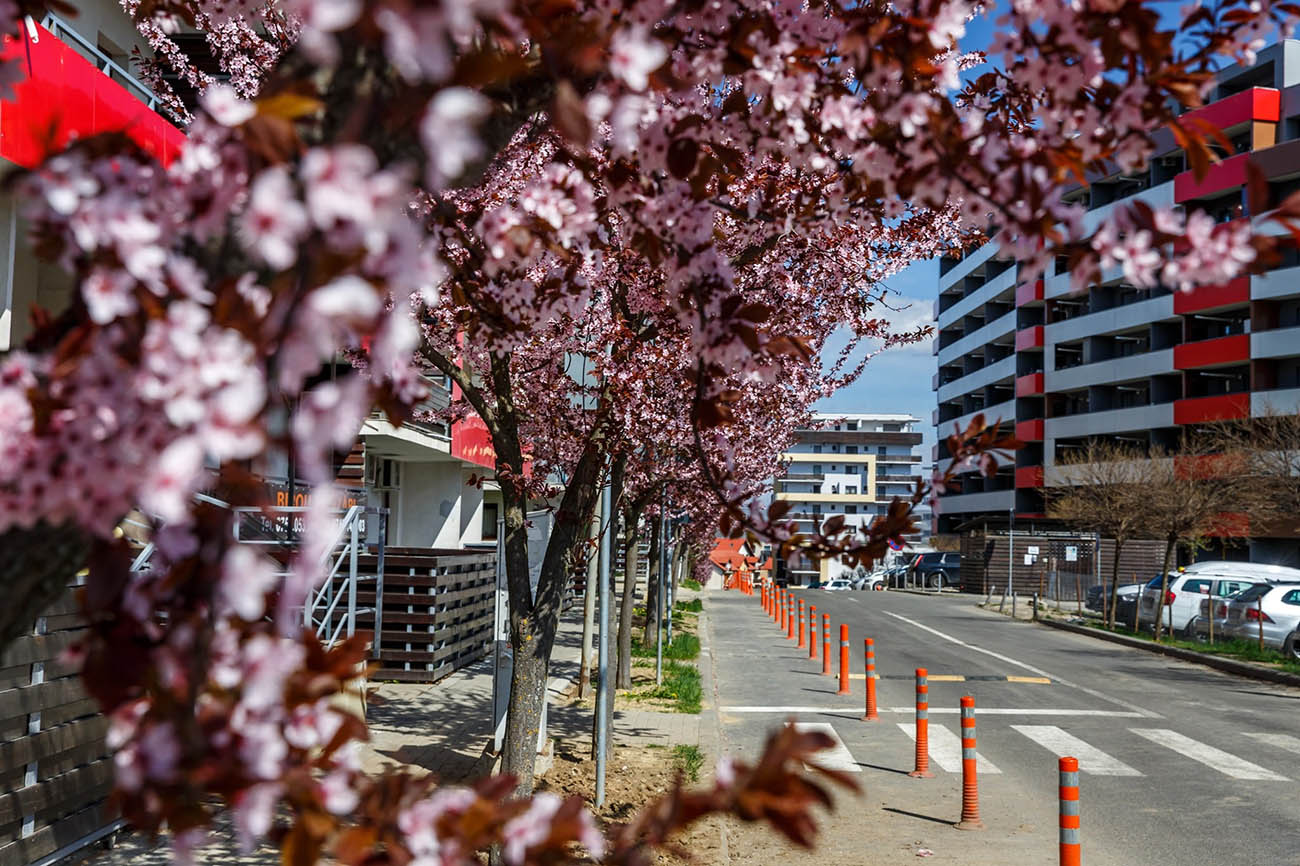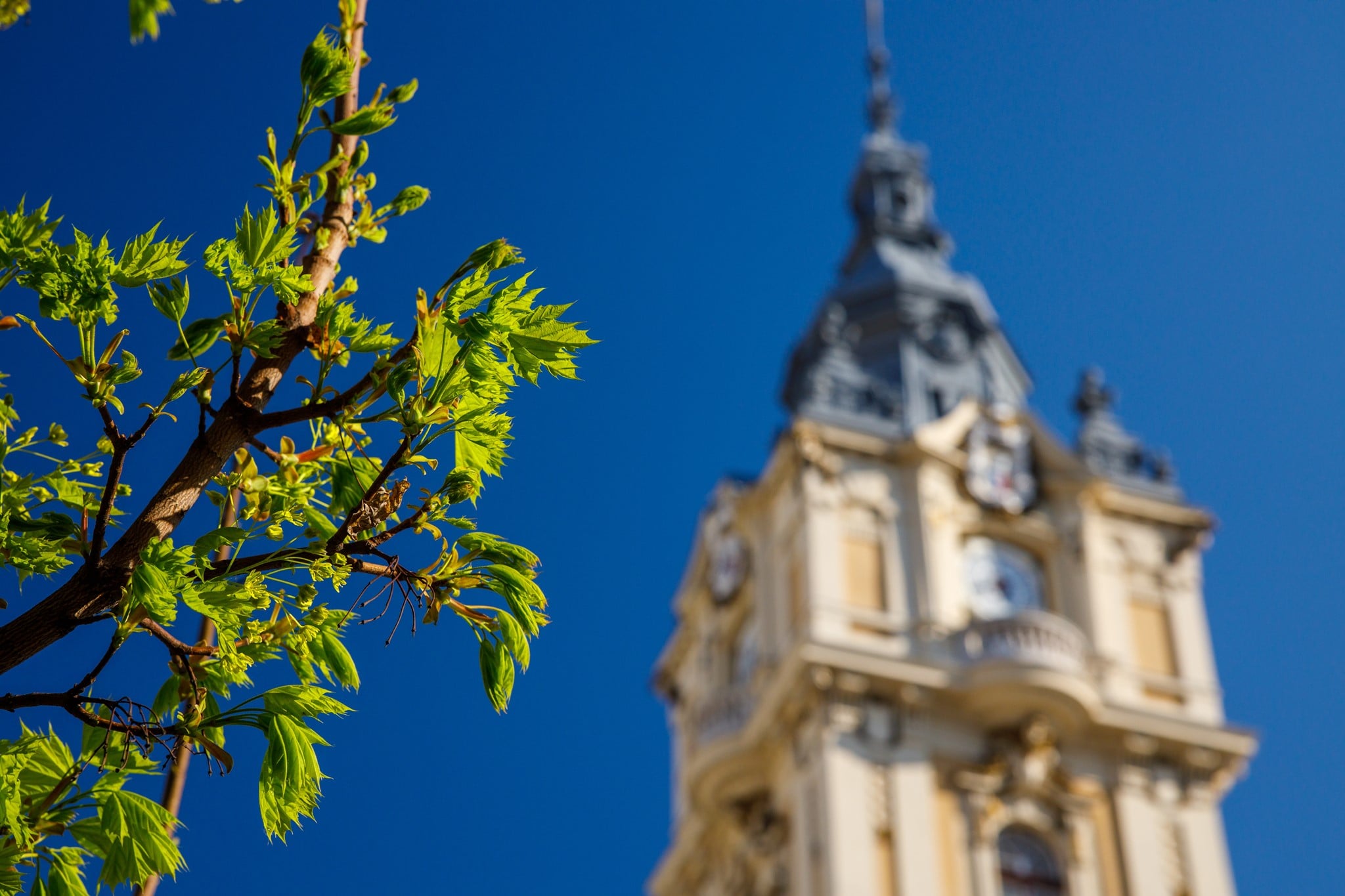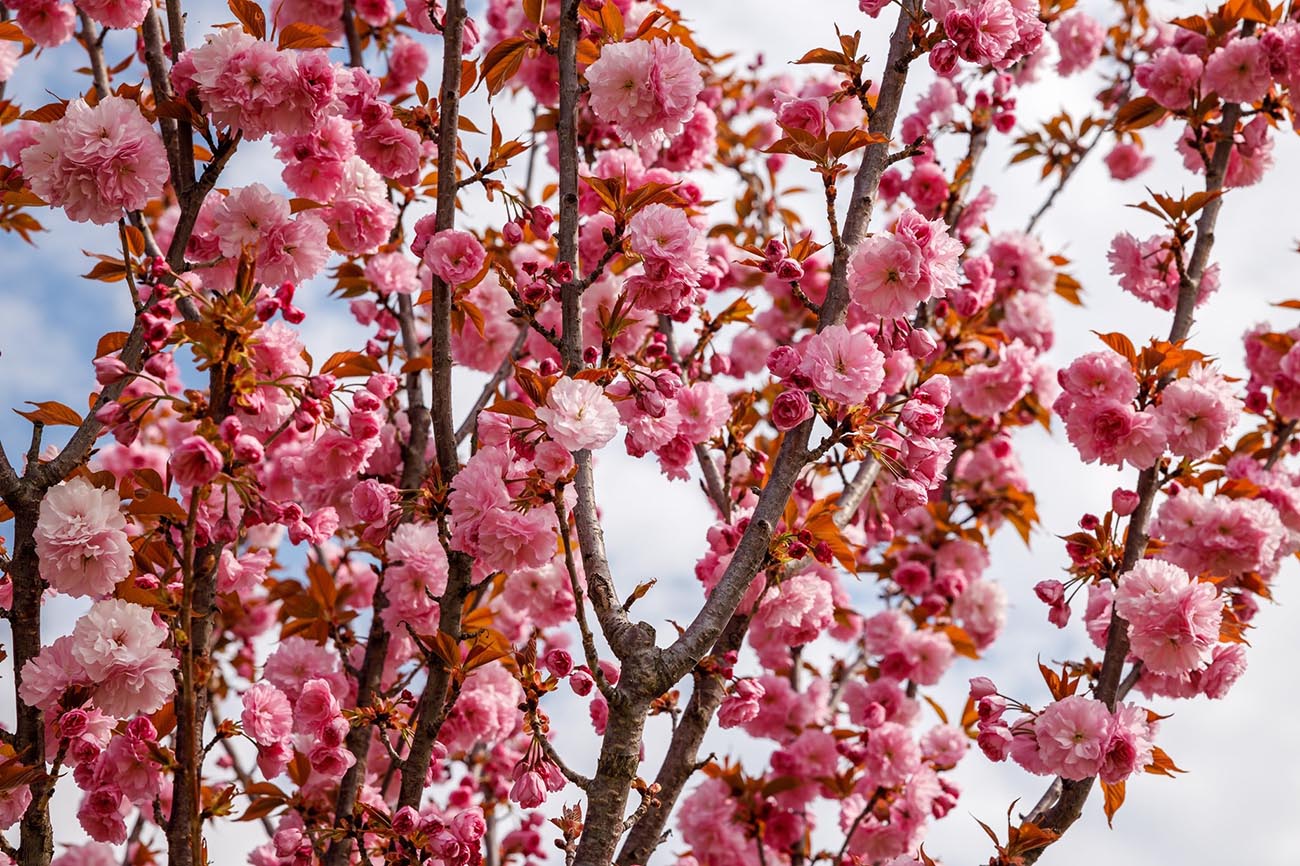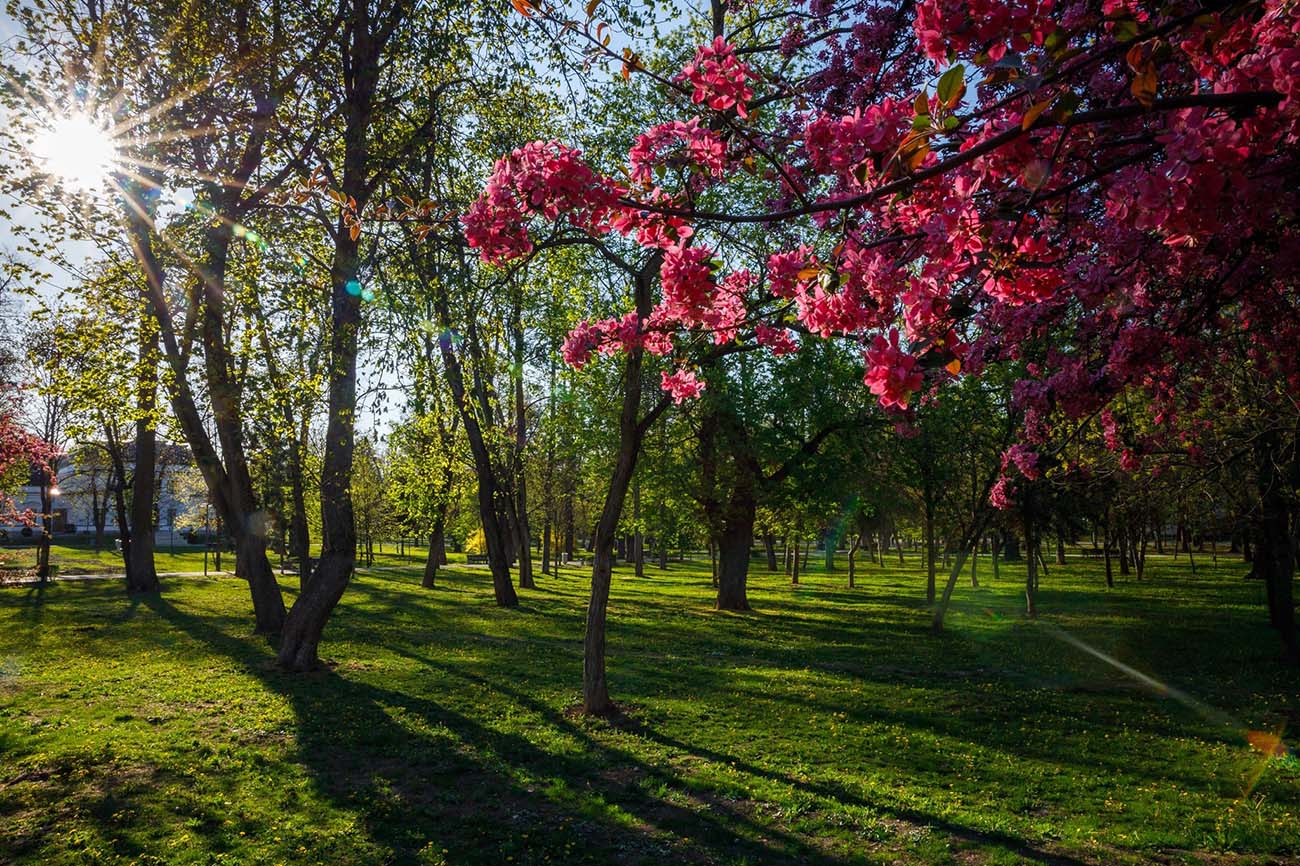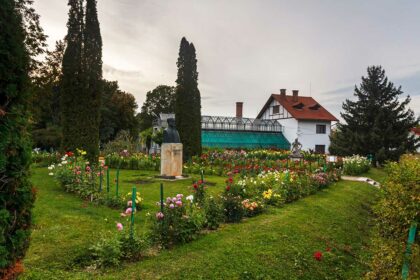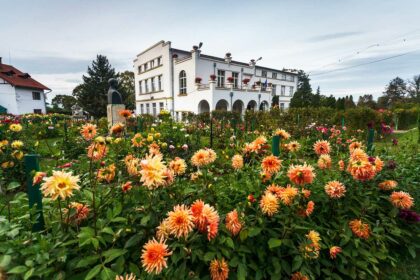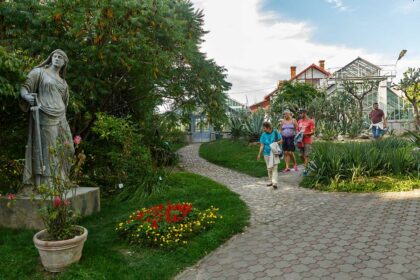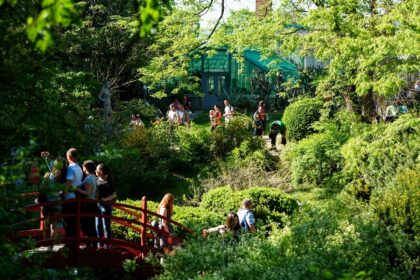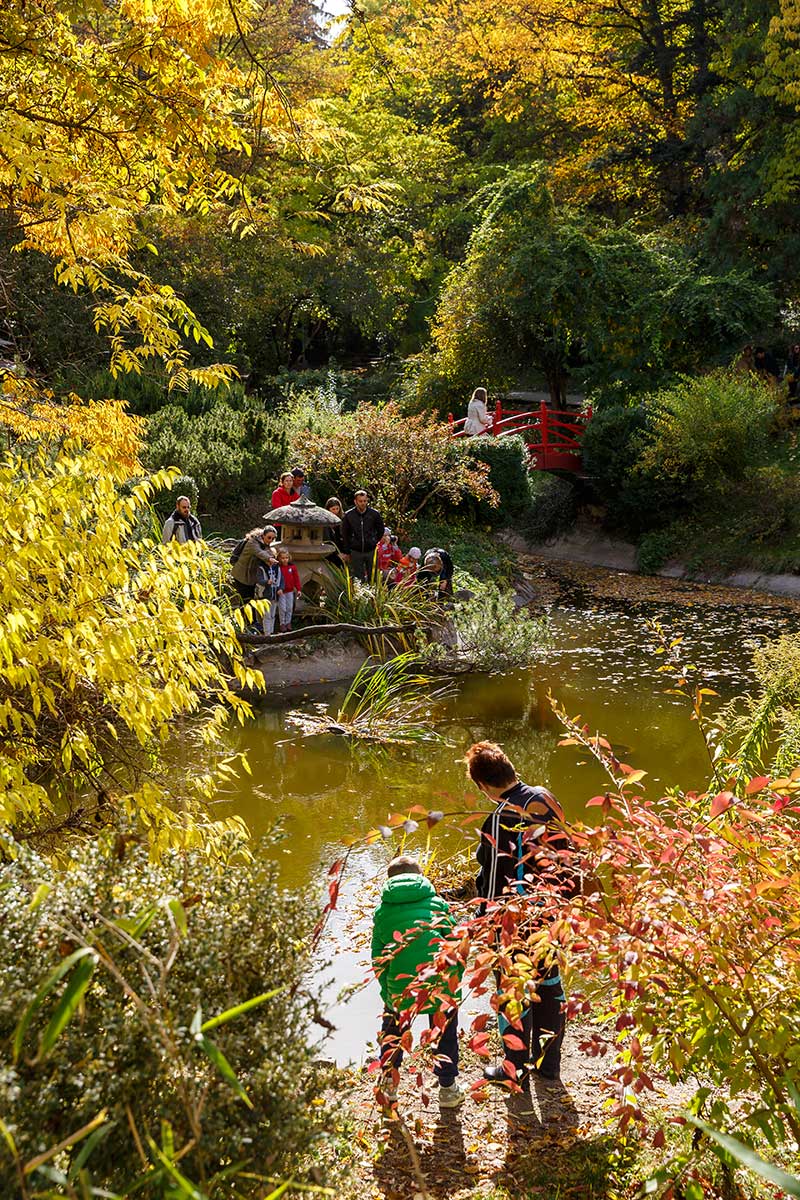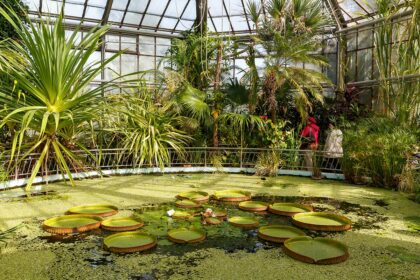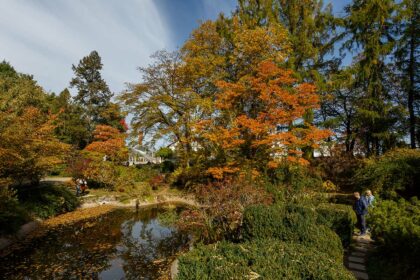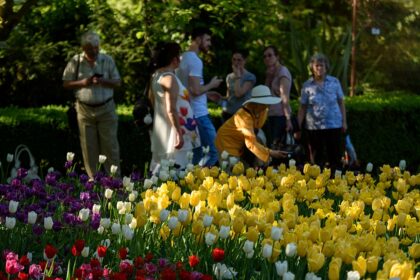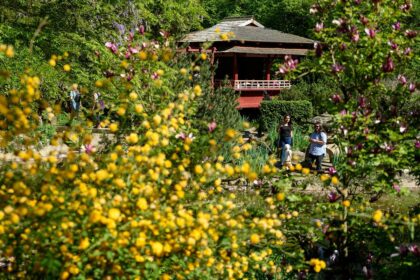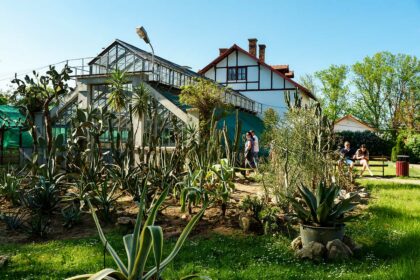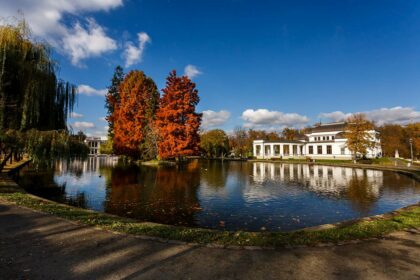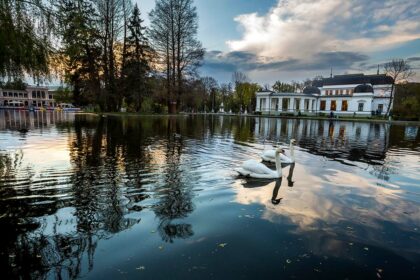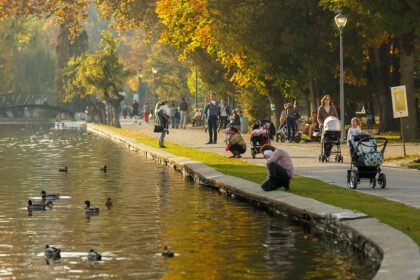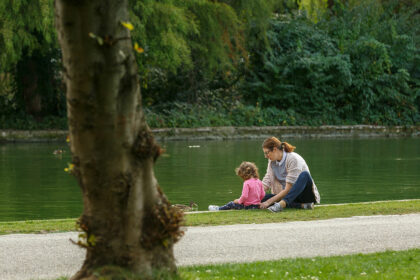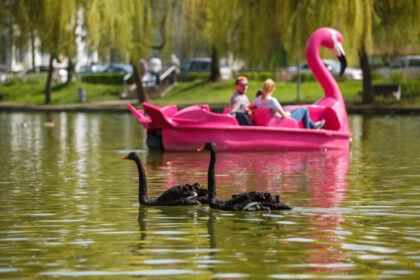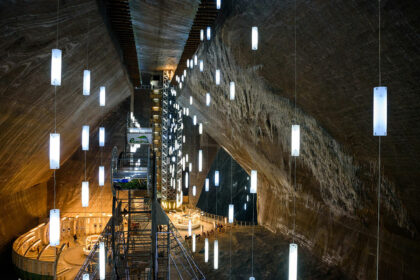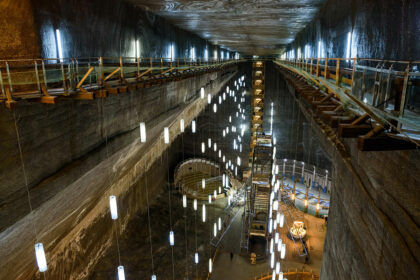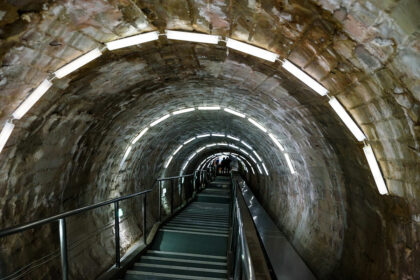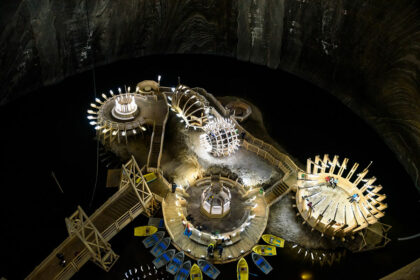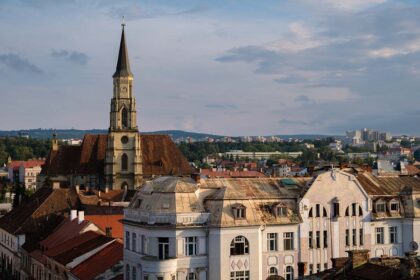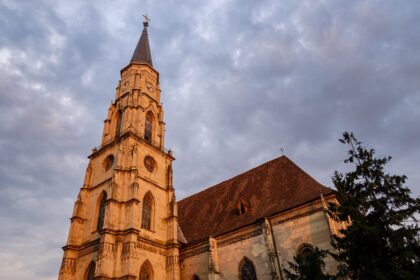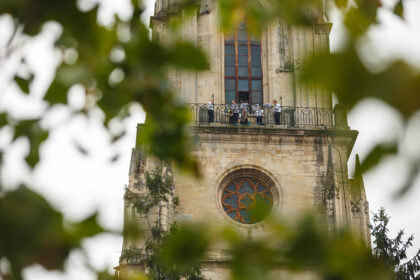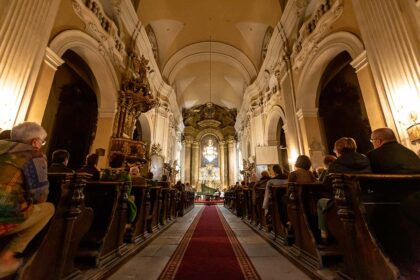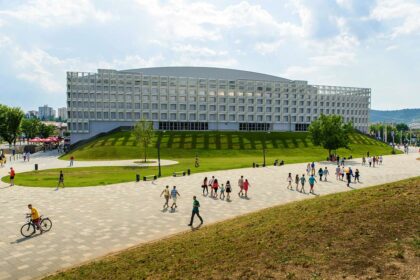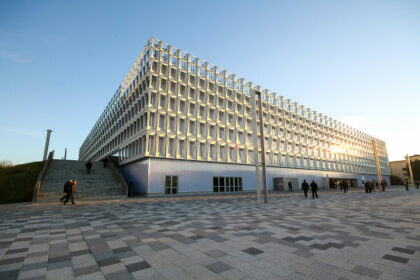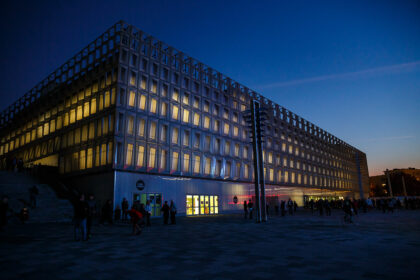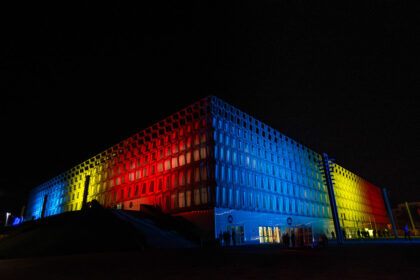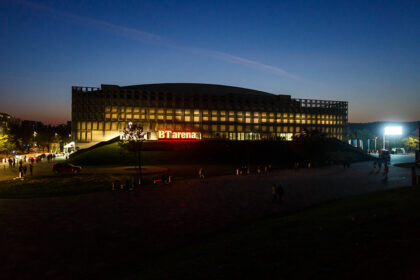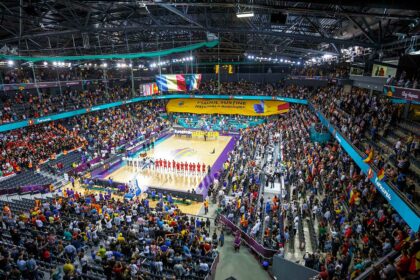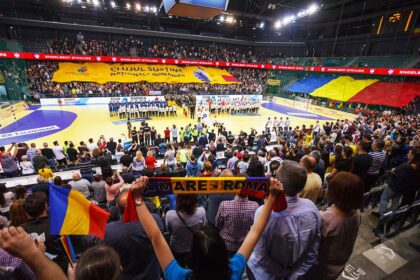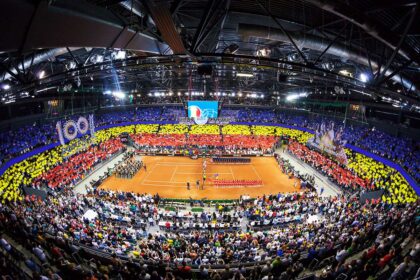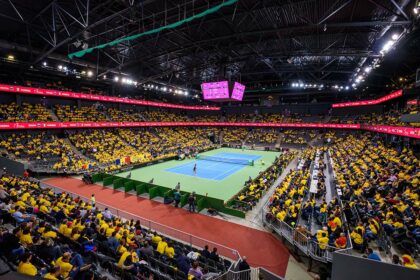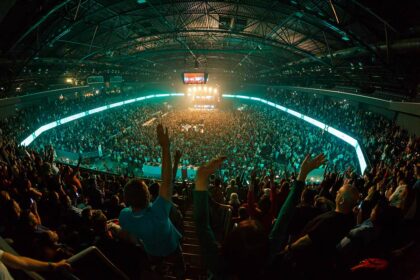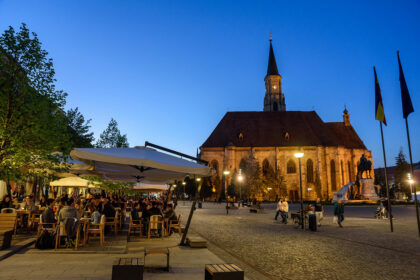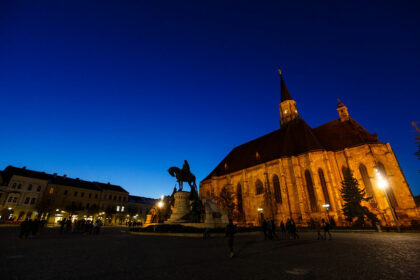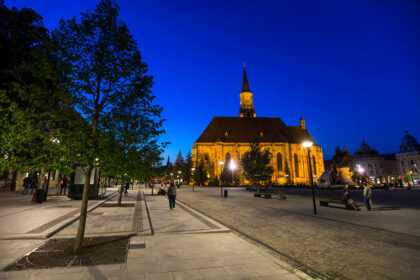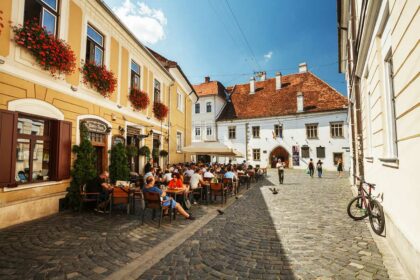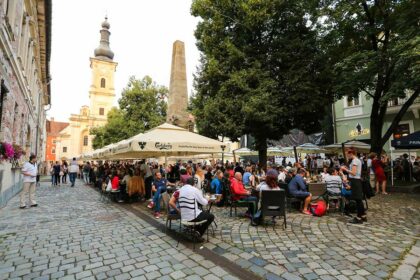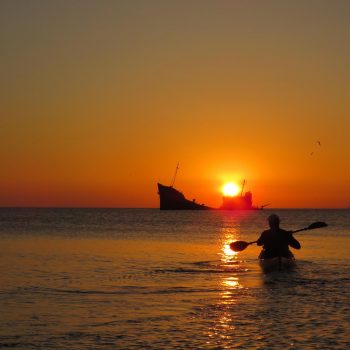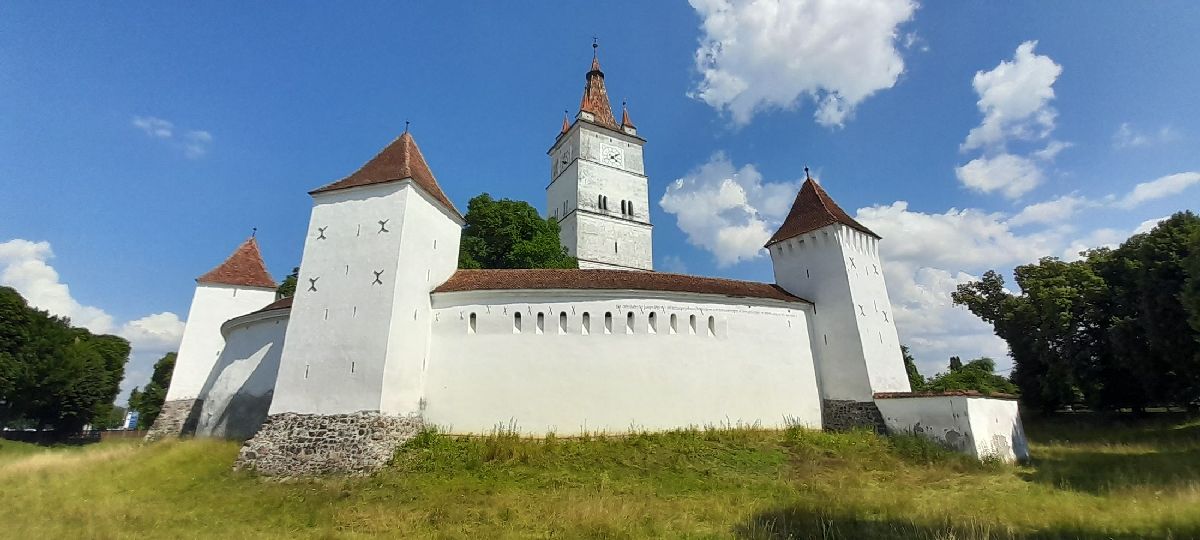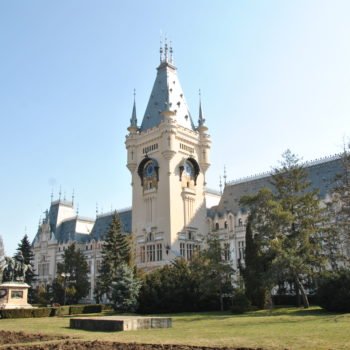Brief Description: Cluj is a city that you should definitely visit. You will fall in love with this wonderful city on your first visit. Everything is magical and mesmerizing and every moment here in the city will delight your soul. Cluj-Napoca is full of life and hosts a large number of students from all over the country and abroad. Pubs with music of all genres, nightclubs, restaurants, museums, theatres, zoos, large squares and many other attractions are waiting for you to be discovered.
County: Cluj
Wikipedia: Cluj-Napoca
Images: visitcluj.ro, Red Frog
Cluj-Napoca in Spring
Alexandru Borza Botanical Garden
The Botanical Garden of Cluj-Napoca is a scientific and educational institution subordinate to Babeș-Bolyai University. On 14 hectares, with a varied landscape, the botanical garden is suitable for the cultivation and care of plants from different continents. Currently, the Botanical Garden hosts over 10,000 species of plants: the ornamental sector (Mediterranean garden, rosarium, Japanese garden), the phytogeographical sector (plants are in their natural habitats – Roman garden), the systematic sector (plants are classified according to their evolutionary history), and the Economic and medical sector (rare and endemic plants from the Romanian flora).
Also noteworthy are the two greenhouses with an area of 3500 square meters with tropical plants. In the botanical garden you will also find a botanical museum filled with 6,910 botanical pieces representing exhibits of native and exotic plants and a herbarium with 660,000 leaves of dried plants and herbs.
Chios Lake
Lake Chios is located in the “Simion Barnuțiu” Central Park or “Big Park” as it is also called. A real oasis of relaxation and one of the sights that should be on your list when visiting Cluj-Napoca. The history of the park spans more than 185 years, and in 2010 it was included in the list of historical monuments in the Cluj County. Lake Chios was created in 1865 by the park association, which then took over the management of the park. The association planted the avenues, dug the lake and built the bandstand. The lake is ideal for boat trips and relaxation in good weather.
Turda Salt Mine
31 km from Cluj, about 30 minutes by car, is the Salina Turda, a museum of the history of salt mining. The Turda Salt Mine dates back to the 17th century, reopened in 1992 for tourism and medicinal purposes and can be visited throughout the year.
The Salt Mine is certainly one of the most famous tourist destinations near Cluj.
St. Michael’s Church
St. Michael’s Church in Cluj-Napoca is an impressive historical and religious monument. St. Michael’s Church is one of the most representative Gothic buildings in Romania. Built between the 14th and 15th centuries, the church is located in Unirii Square and is a major landmark of the city.
Polyvalent Arena
The Polyvalent Arena Cluj-Napoca is the most modern and spacious building in Cluj. Built on 5 levels (basement, ground floor and three floors), the building is designed for a wide variety of events. With a capacity of up to 10,000 seats, the arena can host a variety of events, from martial arts to gymnastics, hockey, tennis and other team sports (basketball, handball, volleyball, etc.) to cultural and corporate events, conferences or concerts. Currently, the Polyvalente Arena Cluj-Napoca is the best equipped and most efficient multifunctional building in Romania.
Mihai Viteazul Market
Mihai Viteazul Market is a small marketplace that was called Széchenyi Square (István) between 1852-1923. Later, during the communist era, the market was the meeting place for official visits by former President Nicolae Ceaușescu. The current Mihai Viteazul Market is one of the most popular markets in the city of Cluj-Napoca. The name of the market comes from the statue of Mihai Viteazul, the first ruler who unified the ancient historical provinces of Romania, located in the market.
The Museum Market
The Museum’s Market is the oldest market in Cluj, located in the heart of the city’s first fortified castle. Also called “the small market” in the past, the current name of the popular market comes from the National Museum of the History of Transylvania, located at the west end of the market. In addition to the museum, other important sights are located here: the Franciscan Church, on the east side of the market, the Carolina Obelisk in front of the church, and Mike’s Palace on the north side of the market. In the summer, the market itself becomes an attraction for Cluj residents and tourists. Always lively, always busy, the market is definitely worth a visit.
Tailor’s Bastion
The bastion, also called the tailor’s tower, is part of the old fortress of Cluj, which has been preserved to this day. The tower was funded by the local tailors’ guild, hence its name. Each bastion (tower) of the medieval defensive wall was financed by a different guild (tailors, shoemakers, carpenters, soapmakers, potters, masons, belt makers, etc.).
The bastion was built in the 15th century but owes its current appearance to a reconstruction in 1627-1629.
In 1924 the bastion was restored and turned into a museum by the Historical Monuments Commission. Between 2007 and 2009 the bastion was restored again and now houses the Center for City Culture, which includes a conference room and exhibition rooms.
More information – Historical Attractions Sightseeing features
Cluj-Napoca, called Kolozsvár in Hungarian and Klausenburg in German, is the capital of Cluj County. It is the second largest city in Romania, with approximately 400,000 inhabitants and is located in the central part of Transylvania with an area of 179.5 km². In the heart of the Apuseni Mountains, the Someşan Plateau and the Transylvanian Plain, the city is located at the intersection of the parallel of latitude 46° 46′N and the longitude of 23° 36′E. It extends mainly over the valleys of Someşul Mic and Nadăş but after extensions, also in Popeştiului Valley, Chintăului Valley, Borhanciului Valley and Popii Valley.
Early history
The first written record of a settlement on the territory of today’s Cluj was made by the Greek geographer Claudius Ptolemy, who mentioned one of the most important settlements in Dacia called Napuca. The first record of Roman Napoca dates from just after the wars of conquest of Dacia. In 107-108 the Dacian settlement of Napuca was expanded into a Roman legionary camp, but the civilian settlement also quickly developed into a locally important small urban center as a transport hub. 117-138 the city received the rights of a municipium under Emperor Hadrian and was now called Municipium Aelium Hadrianum Napoca.
Hadrian’s successor, Marcus Aurelius, elevated the city to the status of a colonia as Colonia Aurelia Napoca.
Around 250, the settlement was already destroyed in the course of devastating plundering raids by Germans and Carps and the departure of the small Romanized population.
Middle Ages
At the end of the 11th and beginning of the 12th century, the Hungarians built the Castrum Clus in the old castle, probably on the ruins of old Napoca. From 1270, large groups of Saxon settlers settled in the city of Cluj during the reign of King Stephen V of Hungary.
As a result, the modern city of Cluj was founded by German settlers in the early 13th century.
The Roman-German Emperor Sigismund of Luxembourg, also King of Hungary, gave Cluj the status of a royal free city in 1405. This helped Cluj become a center for the production and exchange of goods. About 5,000 people were engaged in farming, workshop work and city-specific entertainment. At that time the population consisted of Saxons, Hungarians and, to a lesser extent, Romanians.
In 1541 Cluj-Napoca became part of the Autonomous Principality of Transylvania.
18th and 19th centuries
From 1790 to 1848 and from 1861 to 1867 Cluj was the capital of the Grand Duchy of Transylvania within the Habsburg Monarchy. After the Austro-Hungarian Compromise in 1867, Klausenburg and Transylvania were reintegrated into the Kingdom of Hungary. At that time, Kolozsvar was one of the largest and most important cities in the kingdom and the seat of the Kolozs district.
Modern times
After the First World War, on June 4, 1920, the Treaty of Trianon annexed Transylvania to Romania. In 1940, northern Transylvania with Cluj was returned to Hungary by the second Vienna arbitral award and finally fell back to Romania in 1947 after the Paris Peace Conference.
In 1974, Nicolae Ceauşescu added the ancient Roman term “Napoca” to the Romanian place name Cluj to validate the official theory of the Romanians’ Dacians and Romans descent. In everyday life, however, this name change was only moderately successful, one still speaks of “Cluj”.
Today Cluj-Napoca is one of the most important cultural, economic and scientific centers in Romania.
Cluj-Napoca is still the cultural center of the Hungarian minority in Romania.


